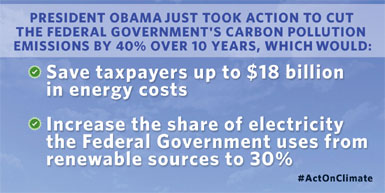Governments are beginning to work together on buying renewable energy, combining their purchasing power for bigger deals at lower prices.
Not surprisingly, the San Francisco Bay Area is leading the way on the local level with its Regional Renewable Energy Procurement Project (R-REP). That inspired the federal government to do the same – the Federal Aggregated Solar Procurement Project (FASPP). Both joint purchase programs are focused on solar.
In the Bay area, 19 agencies are issuing a joint RFP for a combined 31 megawatts (MW) of solar energy to power 186 facilities. Working together, the four counties can reduce design, construction and development costs, bringing the total cost down some 45% compared to other large-scale projects in the Bay Area. They also require local hires, creating about 900 jobs.
The projects are at libraries, fire stations, medical facilities, city halls and schools.
In Westchester, NY, Sustainable Westchester – a consortium of local governments – have formed a solar buying group for 17 municipalities. They expect to install solar on more than 100 public buildings and parking by the end of 2016.
On the federal level, the Forest Service, Department of Energy, and General Services Administration are using a single contract to gain greater efficiency and cost savings for 5 MW of solar projects at nine sites in California and Nevada.
"Combining the purchasing power of local and federal governments is a common-sense approach to combating climate change, reducing taxpayer costs, and spurring innovation," says Gina McCarthy, EPA Administrator. "The success of these initiatives show there is the potential to aggregate renewable energy purchases on a much larger scale in regions across the country."

President Obama spurred this through a recent Executive Order – Planning for Federal Sustainability in the Next Decade – that requires federal agencies to work together on clean energy procurement. The directive sets a goal for federal agencies to cut emissions 40% by 2025 while increasing clean energy to 30% of the mix. Doing so will eliminate $1 billion of the $5 billion the federal government spends on electricity every year to power some 500,000 buildings, says EPA.
In Massachusetts, the state’s four utilities are pooling resources to buy 565 MW of renewable energy from six projects in Maine and New Hampshire – also because of a state law.
Learn more about R-REP:
